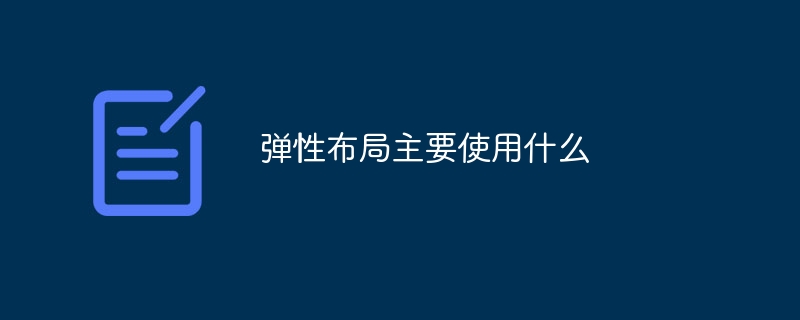
Flexible layout mainly uses CSS to set and control the layout. By using various properties and values of CSS, flexible layout can be easily achieved. Commonly used CSS properties and values include display: flex;, flex-direction: row;, flex-wrap: wrap;, flex-flow: row wrap;, justify-content: flex-start;, justify-content: flex-end ;etc.

# Operating system for this tutorial: Windows system, Dell G3 computer. Flexible layout mainly uses CSS to set and control layout. By using various properties and values of CSS, you can easily implement flexible layouts so that the page looks good across different screen sizes and device resolutions.
The following are some commonly used CSS properties and values in flex layout:
display: flex;: Sets the element as a flex container, allowing the use of flex layout.
flex-direction: row; or flex-direction: column;: Set the main axis direction of the flexible container. row represents the horizontal direction and column represents the vertical direction.
flex-wrap: wrap; or flex-wrap: nowrap;: Set whether the elements in the flexible container wrap. wrap means line wrapping, nowrap means no line wrapping.
flex-flow: row wrap;: Combines flex-direction and flex-wrap properties into a shorthand property.
justify-content: flex-start;,justify-content: flex-end;,justify-content: center; or justify-content: space-between;: set in the flexible container The alignment of the element along the main axis.
align-items: flex-start;,align-items: flex-end;,align-items: center; or align-items: space-between;: set in a flexible container The alignment of the element along the cross axis.
align-content: flex-start;,align-content: flex-end;,align-content: center; or align-content: space-between;: Set in a flexible container The alignment of multi-line elements along the cross axis.
gap: 10px;: Set the spacing between adjacent elements in the flexible container.
flex-grow: 1;, flex-shrink: 1; or flex-basis: 100px;: Set the enlargement ratio, reduction ratio or base size of the element in the flexible container.
By using these CSS properties and values, you can easily implement flexible layouts so that the page looks good across different screen sizes and device resolutions.
The above is the detailed content of What are the main uses of flexible layout?. For more information, please follow other related articles on the PHP Chinese website!




